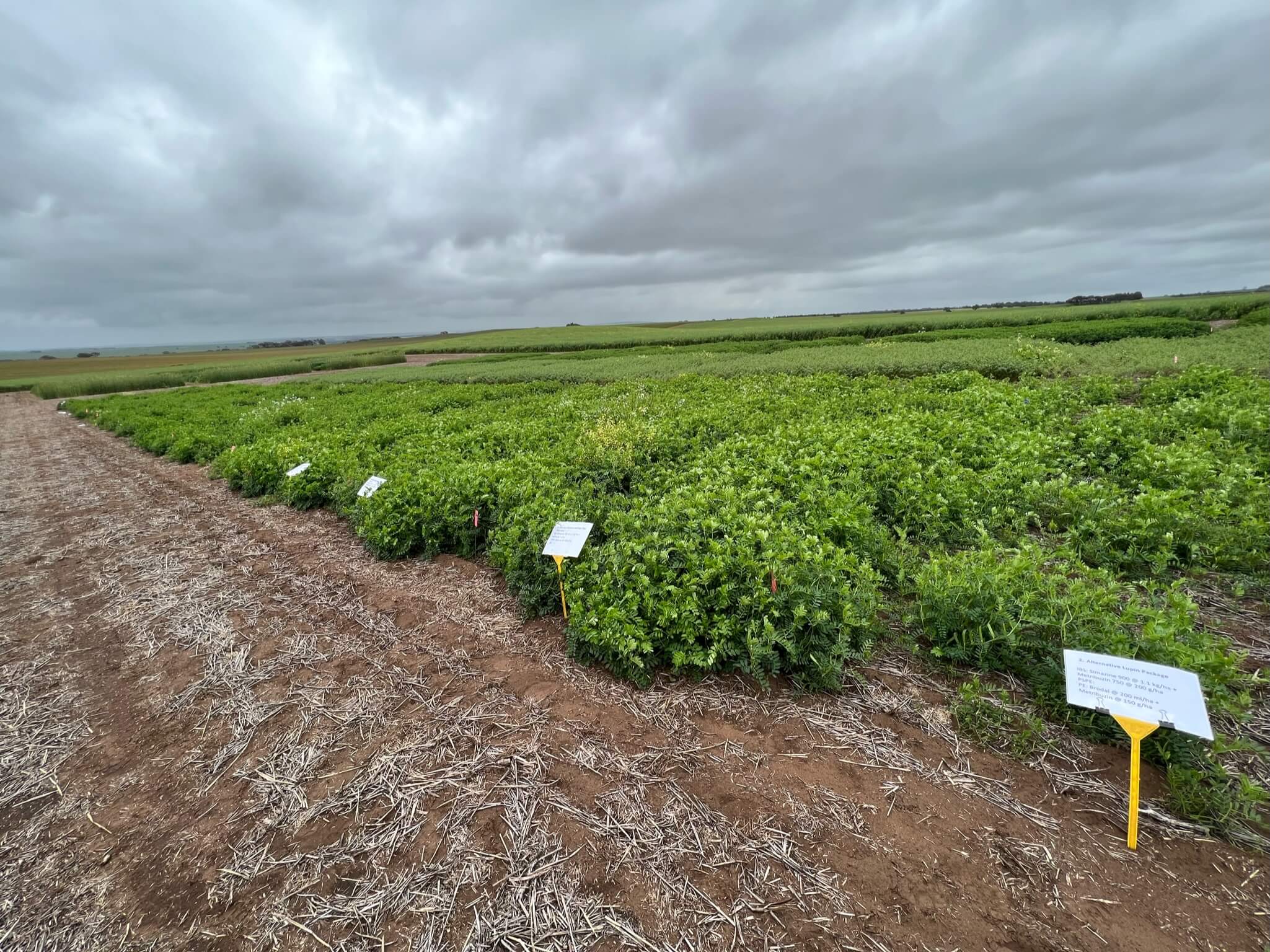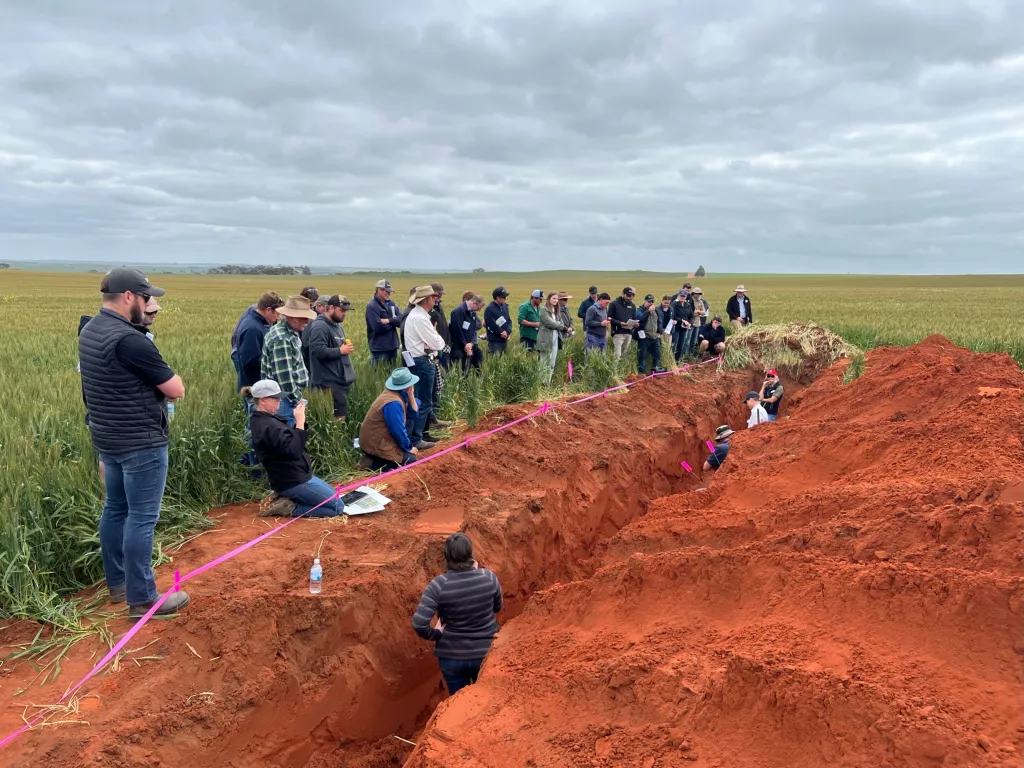Fertilising For Profit Crop Walk - Farmer Summary
By Kate Parker, WMG Project Officer
Another West Midlands Group crop walk and farmer discussion event was held at the Summit Fertilizer’s long term trial site at the Marriott’s property in Dandaragan on the 3rd of September. The event was attended by key speakers from the Summit Fertilizers team (Alana Alexander, Isaac Gilchrist & Juliet McDonald), special guests Wayne Pluske and Dr Hanabeth Luke, and 26 growers and industry reps from across the West Midlands region.

Over the course of the morning, the group looked across two separate trial plots, one investigating Potassium fertilisers and the other assessing Summit’s range of N inhibitors. At each plot, attendees also explored the complexity of decision making in relation to fertiliser use and the economic impact these may have on their farm management practices and overall operations.
The following farmer summary is a collection of synthesised notes taken over the course of the crop walk intended as a refresher for those that were present on the day, and for those that were unable to make the event.

Stop 1: Potassium Trial
Stop 1 looked at K at depth through a long term (5 year) Summit Fertilizers potassium trial comparing placement, rate and MOP vs SOP – looking at the bottom and top of fertiliser applications, i.e. nil vs potential, 0 vs 75. The Summit team noted they have not seen too much difference between treatments this year with attendees discussing the potential of lupin and canola the past two years managing to bring up K from depth, thus flattening the difference between treatments. The WMG K Extension Project is currently investigating this with a trial on different crop species uptake of K from depth at the Brown’s Bidgerabbie farm in Dandaragan.

A key point of discussion focused on seasonal variability, with many commenting that due to the dry start to the season, potassium probably hasn’t leached as much as in previous years. The conversation then centred around the importance of rotations in crops to cycle potassium, as although some crops pull up K, it can easily leach back down if not continuously being pulled back up.
Stop 2: N Inhibitor Trial

Soil Moisture & Temperature Probe
Stop 2 started with a talk from the Summit team around a new cropX moisture temperature probe. This probe can be used to determine how quickly soil dries out, what is plant available and more. The probe can be inserted post seeding, with the ability to leave it in over summer or take it out at the end of the growing season. It has an integrated AI system meaning it is constantly learning and improving its accuracy. There were discussions from the group around the importance of having the numbers to be able to confirm decisions and understanding that temperatures can often be warmer at depth than expected.
N Inhibitors
The focus of the trial at stop 2 is volatilisation, leaching and denitrification of N fertilisers. The range of Summit N inhibitors used in the trial are not only targeting limiting N losses, but also about getting nitrogen to the crop in a timely manner, with the Summit team noting that trials are being implemented to ensure that growers are going to get a response.
While Summit have 12 different sites across the state, other trials are showing greater differences between treatments than this site, possibly due to different soil types, such as the deeper sands at one of the Mingenew trial sites. The Summit team highlighted that using inhibitors means it could be possible to use higher rates earlier, enabling growers to get away with slow release, however, it was noted they are moisture and temperature dependent and have a 28 day maximum release time.
N Management Decisions
After assessing the N inhibitor plots, the group moved to a discussion around Nitrogen management decisions. One interesting point was that almost no-one thought they had got their N applications ‘right’ this year. Most attendees agreed they would have held off if they knew how much rain was going to come after the dry start to this season. Attendees noted the importance of not having knee-jerk reactions to past seasons as every year is different, e.g. last year there was no leaching however this year there likely has been.
Farmers also talked on the economics of applications, with more affordable nitrogen this year coupled with a carry over of N from last year due to the dry summer. This carry over can be dependent on soil type with softer soils typically doing better last year but having run out this year and heavier soils doing worse last year but carrying over 40-60 units this year. There was also discussion around access to data to make decisions easier and the management of sandy soil, potentially spacing out applications.

Decision Making Session with Wayne Pluske
Guest speaker Wayne Pluske continued the conversation around decision making by opening his session with a series of questions; how do you know you got it right? what is ‘your’ right?, and do you want max yield, max profit or is it ROI?
He detailed that first step is to figure out exactly what it is you want out of your nitrogen. Wayne talked of nitrogen being one of the greatest investments in the world, with a 500-1000% return on the first 50-60 units you apply. However, advisors and consultants are reluctant to give hard recommendations due to lots of factors and variability going into this investment. Once crops are in the ground, the only lever to pull to increase yield is Nitrogen, hence growers are more likely to agonise over this decision.
One of Wayne’s key recommendations was the importance of a review process for decisions. Make a decision, look at the result, review, and next time you can improve on the decision. If we focus too hard on ROI and not yield, there is potential to cut off max yield, but on the other hand focusing too hard on yield can cut off ROI. This sparked discussion around risk more specifically – if you have the ability to reduce the risk of a ‘punt’, you are going to make the punt better. Second-time punts were also discussed with pain reduction when having a second crack because if it paid off, that’s good, and if it didn’t, there’s peace of mind that you gave it a shot. Operating efficiency also came into the conversation with 60-65% meaning you are in a good position for a punt; the higher operating efficiency is, the higher the risk of negative cash flow. Wayne also talked of the importance of data and yield map protein levels used as a check mark across several seasons to better determine what you’re leaving on the table.
Soil Health Survey Session with Dr Hanabeth Luke
Dr Hanabeth Luke also attended the day as a guest speaker, talking on results from the West Midlands region from a recent national soil health survey. This survey is gathering information across Australia on who growers are, what they’re interested in, what they do, what motivates them, along with how people are managing their soils and soil health.
The results from this survey paint a picture of where farmers are, and where researchers and others can help. The results from these surveys can be used by grower groups like WMG to leverage funding for farmers in their region, focusing specifically on what they have identified their members have indicated as priorities for the region.

Dr Luke ran the group through the results from the past soil survey completed in 2020 along with the other results from across the country to see how the northern ag region compares. Attendees had a chance to have their say in what questions should be included in the next survey, to be carried out in early 2025, with discussion around what is of most importance to West Midlands growers at this point in time.
More Information
If you are interested in a full set of notes from the event, please contact Kate Parker at projects@wmgroup.org.au.
This event was supported by multiple projects including the RiskWi$e Project, the K Extension Project & the Stubble Management Project.
RiskWi$e is conducted in partnership with grower groups, 6 action research groups,
research/extension partners, CSIRO and the Grains Research and Development
Corporation (GRDC).
The K Extension Project is funded through the Grains Research and Development Corporation (GRDC).
The Stubble Management Project is supported by funding from the Western Australian Government through the State NRM program.














